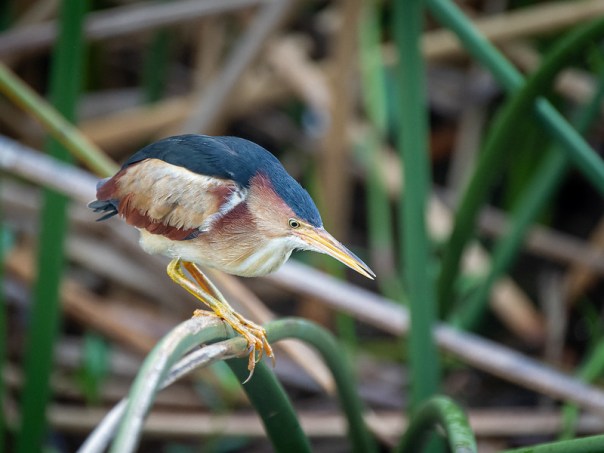Since we’ve been following the Lake Cherokee and Lake Davis Cygnets here on the blog this year, I thought you’d be interested in another update. I apologize in advance for the somewhat disturbing photo below.
Back in late October, a neighbor saw one of the 6-month-old Mute Swan cygnets with what looked like blood all over its body.
 Injured cygnet (Photo by Nicole Halstead, used with permission)
Injured cygnet (Photo by Nicole Halstead, used with permission)
Worried about the bird, several people that live near the lake started calling Florida Fish & Wildlife and other rescue groups to get the swan some help. Many rescue organizations limit help to native species only, and since Mute Swans are considered invasive in Florida it was tough to find anyone that could assist.
A Lake Eola Park Ranger agreed to come over and it turned out the bird was severely wounded with a fishing hook caught deep in its neck. It was also bleeding from its mouth. The ranger tried to remove the hook, but it was in too deep.
Winter Park Veterinary Hospital regularly provides free veterinary assistance to injured wildlife and veterinary services to the Audubon Center for Birds of Prey in Maitland. They agreed to treat the cygnet and the ranger got permission for one of the neighbors to transport the injured swan.
Dr. Catherine Hellenga, DMV, and her team examined the swan. It turned out that most of the blood was due to injuries to its mouth and tongue from trying unsuccessfully to get the hook out of its own neck. The vet was able to remove the hook, and they also took X-rays and checked for possible lead poisoning from weights on the line – all of which came back negative.
They kept the swan for two days, providing fluids, treatment and excellent care until it was ready to be released. Again with approval from park rangers, the neighbor transported the cygnet back to Lake Cherokee where the Lake Eola Park Ranger team helped release it and reunite it with family and friends.
 Ranger releasing the cygnet
Ranger releasing the cygnet
 Recovering Lake Cherokee Cygnet
Recovering Lake Cherokee Cygnet
Cygnet release and flight to join siblings (Portions of this video by MK Rosack, used with permission)
Unfortunately that isn’t the end of the story.
We all hoped it would be accepted back into its family and could stay for a bit longer on Lake Cherokee. The park ranger told us they’ve returned swans to Lake Eola after longer than two days and they’ve been accepted. But when this one was released, the cob acted very aggressively toward it and drove the cygnet away.
Parents usually drive young swans away at around 5+ months old. This cygnet and its siblings had already fledged and were probably old and large enough to survive on their own1. But after it was rejected, it started acting strangely and wandering out in the street – endangering itself and drivers in the area. A police officer saw this and called animal control. They came and took the cygnet to a sanctuary in Christmas, Florida.
Our cygnet has adjusted well to its new home and has another swan for company as well as other feathered friends. It should do fine there.
This is a good reminder though, that we all need to be careful about what we do outside while enjoying nature. Our actions can impact the environment and wildlife, sometimes in a bad way. Pick up after yourself and never leave things like fishing line and hooks behind where they can injure animals or even other people.
Many thanks to Winter Park Veterinary Hospital, the Lake Eola Park Rangers, and Lake Cherokee neighbors for saving this baby swan!
And thanks to all of you for stopping by and reading my blog. Take care of yourselves and each other and watch out for wildlife too. And if you can – make some photos.
©2020, Nicole Halstead, MK Rosack, Ed Rosack. All rights reserved
1. Here’s an article about cygnet development and when they naturally leave their families: https://www.swanlife.com/months-four-to-six




































